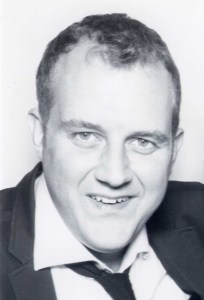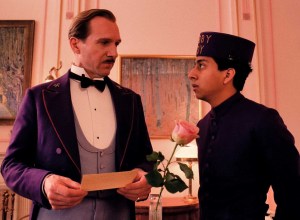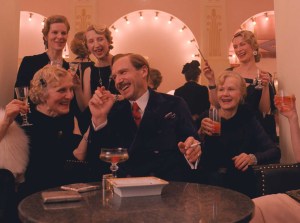
English editor Barney Pilling had never worked with director Wes Anderson before, but during The Grand Budapest Hotel’s principal shoot in Görlitz, Germany, director and editor quickly settled into a copacetic flow, refining but mostly sustaining the small masterpieces of performance the film’s cast delivered for the cameras. “Wes is very much a proponent of the magic of what happens on set,” said Pilling, whose credits include Never Let Me Go and An Education. “He builds entire worlds for his characters to inhabit and every line, gesture and nuance these great performers deliver should be preserved at all times. We chimed instantly on that during our very first conversation.”
Shot by Robert Yoeman, ASC on 35 mm film, The Grand Budapest Hotel features actor Ralph Fiennes in the leading role as hotel concierge M. Gustave H. “Ralph has these huge stanzas he has to deliver without much help from to-ing and fro-ing,” said Pilling. “But I was perpetually amazed by how he could take one tiny word out of 600 in these pages of soliloquy and know exactly how to alter it just the tiniest bit in the next take to try and make the scene work for Wes and for the film as a whole. We wanted to preserve the best that he delivered on the day,” without defaulting to rerecords in a sound booth during post.

In fact, he said, there’s not a single line of rerecorded dialog in the final film, something he credits to Anderson’s “economical and gifted” direction, the brilliant performances of the actors and the stellar work of sound recordist Pawel Wdowczak. “My job was also helped by the fact that Ralph is such a technically gifted actor that he always knew that on this particular word, the camera’s going to whizz off to the right. Consummate performers make for so much more opportunity in the edit suite.”
Pilling said his aim in the edit suite was to follow Anderson’s lead in keeping performances, design, color, costumes and detail within a world of heightened reality under which the dialogue hums at a believable clip. “I think the genius of what Wes does is knowing how to pitch all this stuff so it all balances and doesn’t become absurd. With rhythm, humor and music, he’s a genius at bringing it all together.” Continuing the edit in London and Paris, Pilling worked with temp tracks of melodies that later formed the foundation of Alexander Desplat‘s score and even recorded his own whistling, along with Desplat, for the final soundtrack.
 Beyond the ensemble casts, production design, costumes and curated set dressings that have come to typify Anderson’s work, every whip-pan and tracking shot is essentially written into the script and meticulously planned in advance. “The camera is a critical part of the story and drives the pace of the edit,” Pilling said. “There are very few happy accidents. Wes knows exactly what the camera has to do to tell the story and you see it in all his films.” In many ways, he said, Grand Budapest was the granddaddy of Anderson films for the skill and stamina it required from the entire cast and crew on location and in post, from the breakneck dolly moves of longtime Anderson key grip Sanjay Sami to the grading done by colorist Jill Bogdanawicz. “We all worked incredibly hard and intensely, but the work Sanjay did on set every day and Jill did with Wes during post really went a long way in enhancing the nostalgia embedded in the story itself.”
Beyond the ensemble casts, production design, costumes and curated set dressings that have come to typify Anderson’s work, every whip-pan and tracking shot is essentially written into the script and meticulously planned in advance. “The camera is a critical part of the story and drives the pace of the edit,” Pilling said. “There are very few happy accidents. Wes knows exactly what the camera has to do to tell the story and you see it in all his films.” In many ways, he said, Grand Budapest was the granddaddy of Anderson films for the skill and stamina it required from the entire cast and crew on location and in post, from the breakneck dolly moves of longtime Anderson key grip Sanjay Sami to the grading done by colorist Jill Bogdanawicz. “We all worked incredibly hard and intensely, but the work Sanjay did on set every day and Jill did with Wes during post really went a long way in enhancing the nostalgia embedded in the story itself.”
Pilling said it he’s still trying to get his head around the total surprise of the nomination. “It was a real thrill to get this job,” said the editor, already a fan of Anderson’s work. “As Wes’s later films like Moonrise Kingdom, Fantastic Mr. Fox and Grand Budapest show, he is no ordinary filmmaker. His movies are enormously artistic in a way that not many films are, through the costumes, the production design, the set building, the miniatures, the lovingly hand-crafted elements in unexpected places. There’s a lasting legacy of artistry that he creates that really inspires me in my work.”





